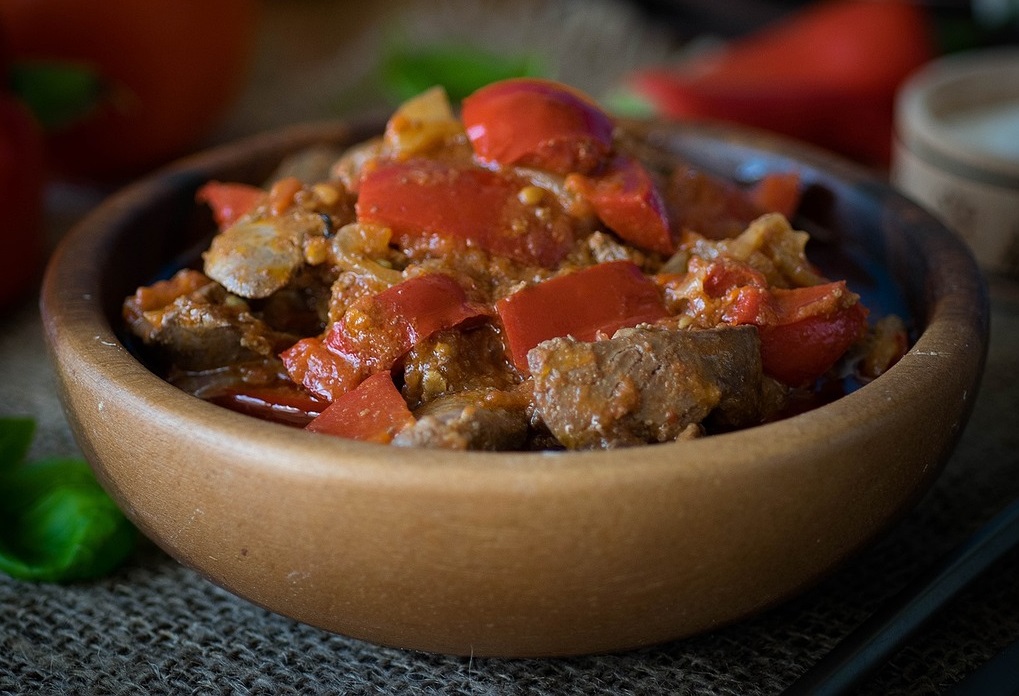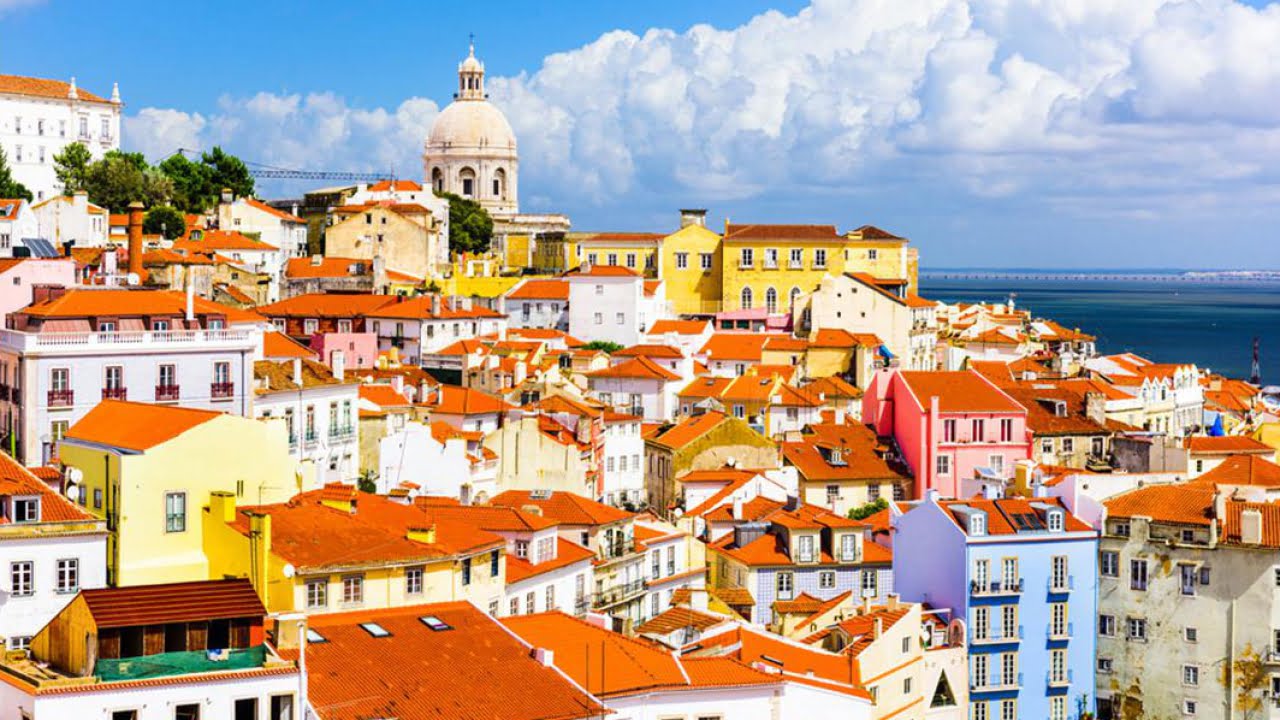Portugal, a country rich in history and culture, is also a treasure trove for lovers of good food. With its magnificent landscapes and golden beaches, it has another equally seductive surprise in store: its gastronomy. Each Portuguese dish tells a story, sometimes centuries old, marked by traditional know-how and the diversity of local ingredients. Are you ready for a gourmet tour of Portugal? Let us guide you through some of the culinary specialities for which this country is famous.
Eating Portuguese food in Lisbon
Before you get started, you’ll find below a selection of activities where you can sample these emblematic Portuguese dishes in Lisbon restaurants or prepare them in workshops. The activities selected are the best rated and have been tested by hundreds of visitors!
Cataplana: the essence of the Algarve
Cataplana is much more than just a dish; it’s a veritable institution in the Algarve. It takes its name from the container used to prepare it, a sort of casserole dish made up of two concave parts. The slow, gentle cooking in this pot preserves all the flavours of the ingredients. Traditionally, Cataplana consists of seafood or fish, sometimes meat, with fresh vegetables and carefully chosen spices.
In every bite, you’ll find the scent of the ocean and a unique complexity of flavour, unique to this age-old cooking method. The version recommended by many includes monkfish and various seafood, offering an explosion of marine flavours on the palate.

Francesinha: Porto’s signature sandwich
Originating in Porto, Francesinha is much more than just a sandwich. It’s a generous mixture of meat, melted cheese and a special tomato and beer sauce, often accompanied by chips and sometimes even a fried egg. This convivial dish can be enjoyed in many restaurants and bars in northern Portugal, particularly in Porto and Braga.
If there’s one thing that makes a good Francesinha, it’s the sauce. Each restaurant has its own secret recipe, which has a major influence on the final taste. In Braga, certain establishments are renowned for their interpretation of this culinary speciality, attracting gourmets from all over the country.
Bacalhau com Natas: cod in all its forms
Bacalhau com Natas is a mainstay of Portuguese cuisine. This creamy gratin of cod, potatoes, onions and garlic, topped with béchamel sauce and baked au gratin, is a comforting delight. Salted and dried cod has been used since the 15ᵉ century for its long-lasting preservation, giving rise to a multitude of recipes based on this fish.
In Portugal, it is said that there are as many cod recipes as there are days in the year! Although the exact origins of this dish are disputed, the constant tradition is to eat this “bacalhau” at family gatherings or on national holidays.
Arroz de Marisco: rice with seafood
Arroz de Marisco is a classic must-try dish for anyone visiting Portugal. This dish of rice simmered in a seafood stock and enriched with mussels, prawns, squid, clams and sometimes chunks of fish, is a seafood delight. The preparation stages involve sautéing garlic and onions in olive oil before adding the rice and stock, followed by the seafood.
This recipe varies slightly from region to region, but always retains its rich, aromatic character. This hot arroz is usually accompanied by a green salad, making the meal both hearty and well-balanced.
Amêijoas at Bulhão Pato: the authentic taste of cockles
Amêijoas at Bulhão Pato are cockles carefully prepared in a simple but divine sauce made with garlic, parsley and olive oil. These bivalve molluscs are highly prized for their tender texture and strong flavour. Start by sautéing the garlic and parsley in olive oil before adding the amêijoas and cooking them gently until they open.
This dish is not only a local favourite, but also a convivial treat that’s easy to share with friends over a glass of chilled Portuguese white wine. It perfectly embodies the spirit of Portuguese cuisine: using simple ingredients to create extraordinarily tasty dishes.

Duck rice: Arroz de Pato
Arroz de Pato is a speciality that combines the richness of duck with the simplicity of rice. The duck is first cooked in a stock flavoured with vegetables, white wine and spices. Once cooked, it is shredded and mixed with rice that has absorbed the flavoured broth.
For even more flavour, slices of chouriço, peas, olives and sometimes even ham are added, offering a variety of textures and flavours. Served hot, this comforting dish is ideal for dinner with friends or family.
Bacalhau à Brás: a perfect fusion of cod and potatoes
Bacalhau à Brás is another famous variation on cod dishes. Made with shredded cod, finely chopped and fried potatoes, onions and scrambled eggs, this dish offers an irresistible combination of flavours and textures. The finishing touch comes from the black olives and chopped parsley sprinkled on top.
This dish is often served as a starter, but can also be enjoyed as a main course. It’s a perfect example of how the Portuguese transform humble ingredients into a royal feast, best enjoyed with a well-chosen Portuguese wine.
Cozido à Portuguesa: the generous stew of the countryside
Cozido à Portuguesa is an emblematic dish that embodies Portugal’s peasant heritage. This rustic stew combines a variety of meats (beef, pork, chorizo, chicken) and vegetables (potatoes, carrots, cabbage) simmered slowly to reveal rich, comforting flavours.
Born in the Portuguese countryside, this hearty dish was often prepared for large family meals, using locally available ingredients. Today, it is enjoyed throughout the country, particularly in winter.
Polvo à Lagareiro: grilled octopus in olive oil
Polvo à Lagareiro is a simple yet refined dish featuring octopus, grilled to perfection and drizzled with a generous amount of olive oil. Accompanied by roast potatoes and green vegetables, this dish is a must for seafood lovers.
“Lagareiro” refers to the traditional presses used to produce olive oil, an essential element in Portuguese cuisine. This dish celebrates Portugal’s love of seafood and quality olive oil.
Sardinhas Assadas: the flavour of popular festivals
Grilled sardines are a symbol of Portuguese celebrations, especially during Saint Anthony’s Day in Lisbon. Grilled over coals, they are served with fresh bread or potatoes and a salad of pickled peppers.
During the summer festivals, the streets are filled with the smell of grilled sardines, creating a festive and convivial atmosphere that brings locals and visitors together.
Carne de Porco in Alentejana: land and sea in harmony
This unique dish marries pieces of marinated pork and clams, cooked together for a surprising combination of land and sea flavours. It is often accompanied by fried potatoes and garnished with fresh coriander.
Although attributed to the Alentejo, a region famous for its quality pork, some argue that the dish has roots in the Algarve. This debate illustrates the richness and diversity of Portuguese cuisine.

Frango Assado: the iconic grilled chicken
Frango Assado, or grilled chicken, is marinated in a mixture of garlic, lemon, olive oil and spices, then cooked slowly over a wood or charcoal fire. Served with chips and a salad, it is a must in Portuguese churrasqueiras.
This simple but tasty dish is a popular option for meals with family and friends, appreciated for its smoky, juicy flavour.
Bifanas: the popular sandwich
Bifanas are spicy marinated pork sandwiches served in crusty bread. This quick and economical dish is a Portuguese favourite.
Born in traditional taverns, this sandwich has become a staple of street stalls and small restaurants across the country.
Moelas: gizzards in sauce
Moelas, or chicken gizzards, are simmered in a rich sauce made from tomatoes, white wine, garlic and spices. This dish is often served as a starter or as a side dish with fresh bread.
In the Portuguese countryside, this dish was a way of using every part of the animal, reflecting an anti-waste cuisine deeply rooted in the culture.
Alcatra: the Azores stew
Originally from the island of Terceira, Alcatra is a beef stew simmered in red wine with onions, garlic, bacon and spices. Cooked in an earthenware pot, this dish embodies the culinary traditions of the Azores.
Slow cooking in an earthenware pot gives the meat an unrivalled depth of flavour and tenderness.
Tripas in Moda do Porto: a maritime heritage
Tripas à Moda do Porto is a stew made with tripe, white beans, sausages and vegetables. This emblematic Porto dish has its origins in the era of the great maritime explorations.
The inhabitants of Porto, nicknamed “Tripeiros”, gave their best meats to the sailors, keeping only the tripe. This act of generosity gave rise to the dish that is now a symbol of local pride.
Bacalhau in Gomes de Sá: a tribute to a cod merchant
Created by Gomes de Sá, a Porto merchant, this dish combines cod, potatoes, onions, hard-boiled eggs and black olives, all baked au gratin.
The dish originated in a Porto restaurant in the XIXᵉ century and has since established itself as one of the country’s most popular cod recipes.
By discovering these typical Portuguese dishes, you embark on a unique gastronomic journey. Each speciality reveals a part of Portugal’s history and culture, offering much more than just culinary delights. Bon appétit and enjoy your culinary discoveries!
Related Articles
- Getting a driving licence in Portugal
Many English speakers are looking on the internet for information on how to obtain a…
- Business creation and accounting in Portugal
English-speaking accounting firm located in the heart of Lisbon Fill in the form below to…
- Taxation in Portugal
Taxation in Portugal is the source of many questions that those who are beginning to…



